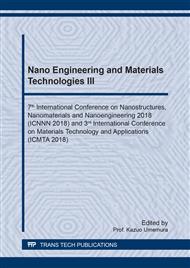p.103
p.109
p.114
p.119
p.125
p.130
p.137
p.142
p.148
Evaluations of Absorption Materials Applied in the Noise Reduction: Experiment and Simulation
Abstract:
This article presents a finite element simulation method for airflow resistance of material to predict the influence of absorption material applied to compressor box. To obtain the real airflow resistance, a measurement system based on the standard ASTM C522-03 was systematically built up and carefully verified. Furthermore, commercial finite element software, COMSOL Multiphysics, was adopted to create the model and execute the simulation with and without absorption material. Results showed that airflow resistance increases with the thickness and the density of the material. This system is quite stable and suited to any material. With the aid of COMSOL Multiphysics simulations, the performance of noise with and without absorption material can be analyzed and compared with experimental results. There was good agreement between experimental and simulation results. Based on absorption material of 15,278 Pa.s/m3 airflow resistance, the noise level outside the compressor box obtained from experiment was around 10 dBA higher than that obtained from simulation.
Info:
Periodical:
Pages:
125-129
Citation:
Online since:
March 2019
Authors:
Price:
Сopyright:
© 2019 Trans Tech Publications Ltd. All Rights Reserved
Share:
Citation:


